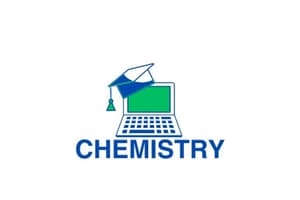Podcast
Questions and Answers
Explain, at a molecular level, how the transfer of an electron between sodium and chlorine atoms results in the formation of an ionic bond and the creation of Na+ and Cl- ions.
Explain, at a molecular level, how the transfer of an electron between sodium and chlorine atoms results in the formation of an ionic bond and the creation of Na+ and Cl- ions.
When sodium and chlorine atoms interact, sodium donates an electron to chlorine. This gives sodium a +1 charge (Na+) and chlorine a -1 charge (Cl-). The resulting electrostatic attraction between these oppositely charged ions forms the ionic bond.
Water (H2O) is essential to life. Describe how its properties as both a molecule and a compound contribute to its life-sustaining characteristics.
Water (H2O) is essential to life. Describe how its properties as both a molecule and a compound contribute to its life-sustaining characteristics.
As a molecule, its covalent bonds provide stability. As a compound, it facilitates a wide range of chemical reactions due to its polarity and acts as a versatile solvent for biological molecules.
Discuss the implications if oxygen existed in nature as a single atom (O) instead of a molecule (O2) in terms of its reactivity and impact on biological systems.
Discuss the implications if oxygen existed in nature as a single atom (O) instead of a molecule (O2) in terms of its reactivity and impact on biological systems.
As a single atom, oxygen would be highly reactive due to its unpaired electrons, leading to uncontrolled oxidation and damage to biological molecules. O2 provides a stable, regulated form of oxygen for respiration.
Propose a scenario in which disrupting ionic bonds within a biological system could lead to a cascade of adverse effects, impacting cellular function and overall organismal health.
Propose a scenario in which disrupting ionic bonds within a biological system could lead to a cascade of adverse effects, impacting cellular function and overall organismal health.
Explain how energy is involved when a chemical reaction occurs?
Explain how energy is involved when a chemical reaction occurs?
Consider two hypothetical elements, X and Y, with very different electronegativities. Predict the type of bond likely to form between them and explain how this bond formation affects the charge distribution and properties of the resulting compound.
Consider two hypothetical elements, X and Y, with very different electronegativities. Predict the type of bond likely to form between them and explain how this bond formation affects the charge distribution and properties of the resulting compound.
If a scientist were to discover a new element that readily forms covalent bonds with carbon, what properties would you expect the resulting molecules to exhibit, and how might these compare to compounds formed through ionic bonds?
If a scientist were to discover a new element that readily forms covalent bonds with carbon, what properties would you expect the resulting molecules to exhibit, and how might these compare to compounds formed through ionic bonds?
Imagine a scenario where a cell's internal environment becomes hypertonic due to an increased concentration of ions. Explain how this imbalance would affect the cell's interactions with water and how the cell might respond to restore osmotic equilibrium.
Imagine a scenario where a cell's internal environment becomes hypertonic due to an increased concentration of ions. Explain how this imbalance would affect the cell's interactions with water and how the cell might respond to restore osmotic equilibrium.
Flashcards
Molecule
Molecule
Formed when two or more atoms covalently bond together.
Compound
Compound
A substance formed when atoms of two or more different elements bond together.
Ionic Bond
Ionic Bond
A bond formed through the transfer of electrons between atoms.
Ion
Ion
Signup and view all the flashcards
Covalent Bond
Covalent Bond
Signup and view all the flashcards
Hydrogen Bond
Hydrogen Bond
Signup and view all the flashcards
Electron Transfer
Electron Transfer
Signup and view all the flashcards
Chemical Reaction
Chemical Reaction
Signup and view all the flashcards
Study Notes
Molecules and Compounds
- Atoms, except for noble gases, bond with each other to form molecules or compounds.
- A molecule is a group of two or more atoms bonded together.
- A compound is a molecule made from two or more different elements chemically bonded.
- Water (H₂O) is a compound containing hydrogen and oxygen atoms.
- Molecules are the smallest unit of a compound that retains the properties of that compound.
Ionic Bonding
- Atoms become ions when electrons are transferred.
- Electrons are transferred to balance positive and negative charges.
- Ions are charged particles.
- Sodium (Na) donates an electron, becoming a positive ion (Na+).
- Chlorine (Cl) accepts an electron, becoming a negative ion (Cl-).
- The transfer of electrons creates an ionic bond that holds the ions together.
- Ions' formation creates a charge imbalance in each original atom, causing a positive and negative charge.
Studying That Suits You
Use AI to generate personalized quizzes and flashcards to suit your learning preferences.




